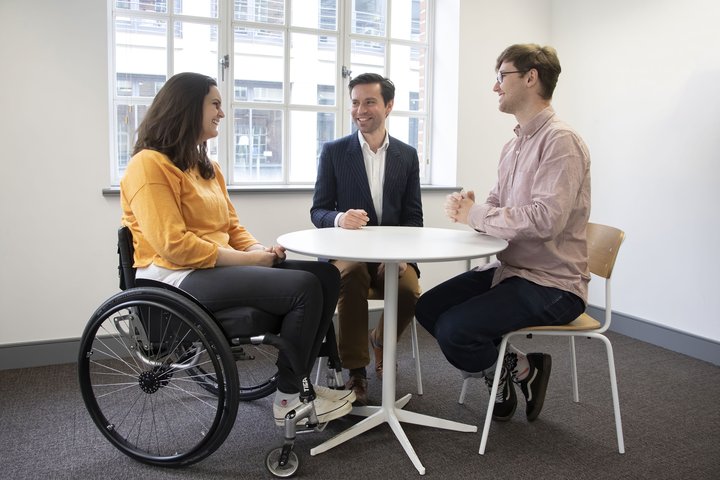How to make decisions and stick to your convictions as a leader
As a leader, your team looks to you for decisions on matters big and small. Some decisions are easy to make, but what about those bigger decisions that can leave you second guessing yourself?
The ability to make decisions, communicate them to your team and secure buy-in, have the confidence to stick by them and adapt when necessary are essential skills for leaders. RADA Business Practitioner Sandie Miller shares her insights into the process.

Understand your personal values
“Good leaders understand their personal values intimately, and it’s important to practice those values with any decision you make,” says Sandie. Understanding your values will allow you to make rational choices that you can feel good about. Try to bring that energy into your daily decision making, and you’ll find that making decisions becomes easier and you’ll feel happier and more authentic.
Remember that you also don’t need to respond or decide immediately. Take a moment to focus on your breath and gather your thoughts in alignment with your values. “If in doubt, breathe out,” says Sandie. “There’s nothing wrong with saying ‘I need some time to think about that’, or ‘I'll get in touch with you in 10 minutes.’” Sometimes you need to allow time to weigh up the pros and cons of your decision; give yourself some time to think.
“Breathing also oxygenates your brain, allowing you to think rationally and logically,” says Sandie. This process of breathing low and slow and focusing on your breath will ground you, give you space to think, and enable you to make a clearer decision.

Communicate the big picture
Once you’ve given yourself space to think and have made your decision, make sure you give your team the full picture. “Think about what you need people to do and why you want them to do it,” says Sandie. “Your objectives need to be crystal clear.”
Try this exercise: write down your objectives in 20 words or less to make sure that they are clear and actionable. “Whatever you do, communicate with clarity in language that's easy to understand. The more succinct you can make your objective, the more impactful your story is going to be for your team.”
Remember to check that your team’s objectives align with yours; ask questions, find out what they’re thinking, and ensure you clear up any misunderstandings. Great decisions are often shaped by many different viewpoints. Make sure that your team feels able to voice their opinions, and develop ideas together. As a leader, you don’t need to have all the answers. You will likely find that your team has insights and solutions you haven’t considered.
How – and when – to stick by your decision
Once you’ve communicated your decision, how do you stand by it? “Don't spend time dwelling on decisions once you’ve made them,” says Sandie. “If you base your decision making on rational and logical grounds, keep an open mind, and build relationships with people along the way that are positive and honest, you’ll feel confident that you’ve made the best decision you can with the information you have.”
Remember that it’s also ok to change your mind as situations evolve over time. As the needs of your business change, you may find that some decisions need to be adapted or scrapped entirely, but don’t be too blinkered by your previous decision; realise that it’s a strength to allow your decisions to evolve too.
“You also need to be able to forgive yourself if something has gone wrong. People make the decisions they make because they genuinely think it's the best thing to do at that time,” says Sandie.
Have confidence in yourself
Remember that you’ll never be able to please everyone; a vital part of leadership is being resilient and having confidence in yourself even when people don’t agree.
“Your team will respond positively to the confidence that you have in yourself, but remember that they don’t need to see perfection,” says Sandie. “Imperfections make us human, and your humanity is appealing to your team.”
The only surefire way to evaluate the efficacy of a decision is to assess the outcomes. You’ll discover, over time, whether a decision was good, bad, or indifferent. But if you rely only on retrospective analysis, the path to better decisions can be tenuous: hindsight is incredibly prone to attribution bias. Remember too that as business needs evolve, previous decisions just won’t work anymore: be wary of being unnecessarily stubborn. The true strength of a leader lies in their responsiveness to change and their ability to flex to meet the needs of their team and their organisation.

Learn more about the leadership programmes offered by RADA Business: Leadership Programmes for Individuals
